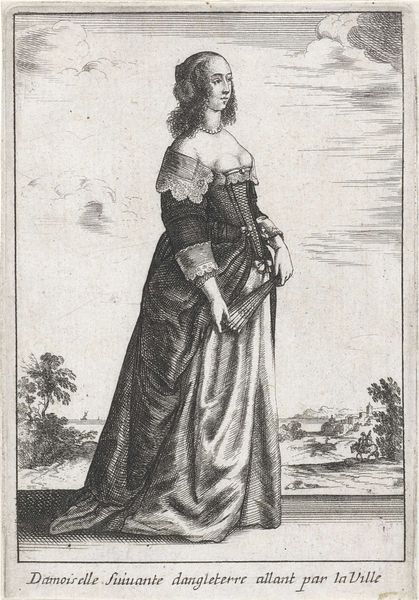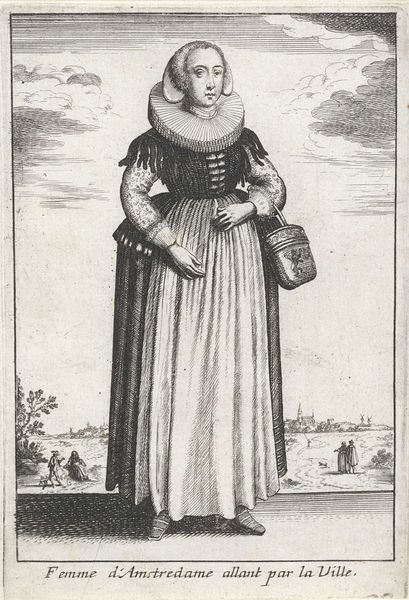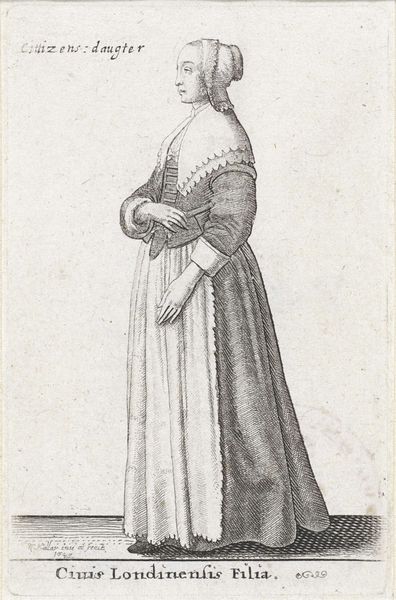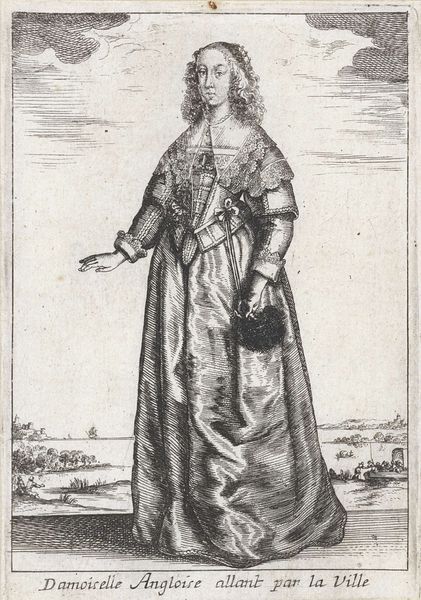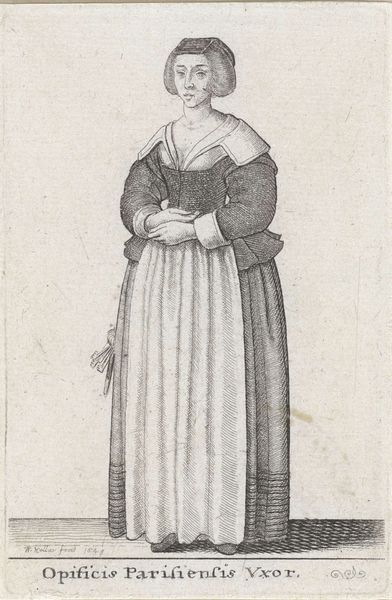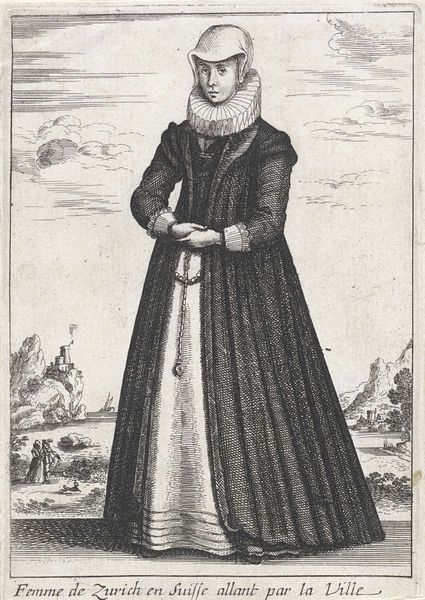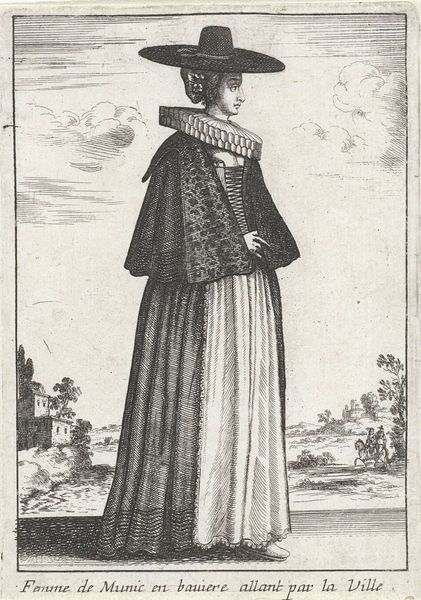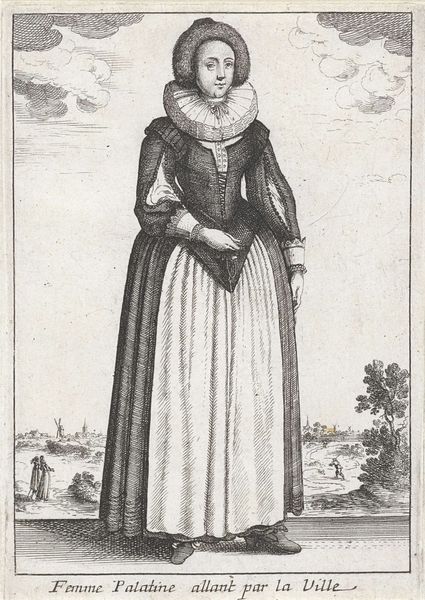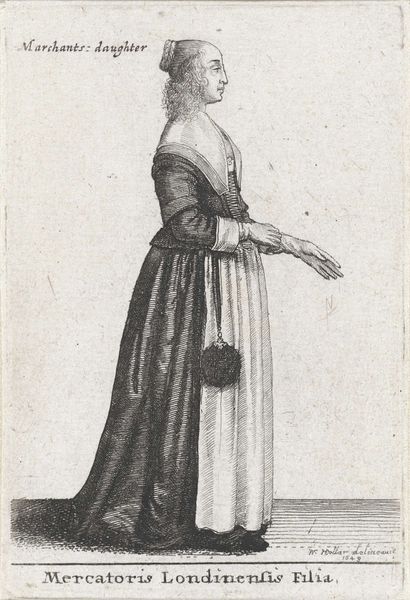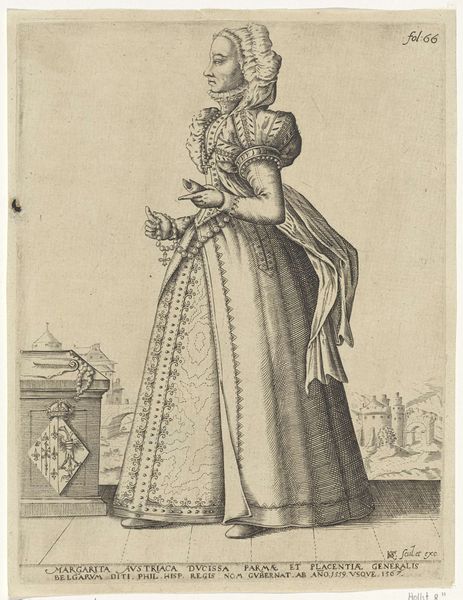
print, engraving
#
portrait
#
baroque
# print
#
figuration
#
genre-painting
#
engraving
Dimensions: height 139 mm, width 95 mm
Copyright: Rijks Museum: Open Domain
Curator: I'm struck by the starkness of this print. It’s called "Femme Villageoise de Anurons de Paris", depicting a woman from around Paris, and was made around 1662. The medium is engraving, that gives it such a graphic, linear quality. Editor: It feels very formal for a genre painting. She looks like she's posing for a portrait, with a basket of produce clutched rather delicately. The artist is noted only as "Anonymous". What do you think her placement within the landscape communicates? Curator: Well, her upright stance, set against that rather distant landscape, it suggests a figure of significance, maybe representing the idealized rural worker. Notice the details, her headscarf, the carefully rendered folds of her gown. It’s all incredibly intentional. And think about what an engraving can accomplish - these were often precursors to mass media, almost like visual "news" depicting different classes of people, places, costumes, to far away patrons or merchants, even for scholarly records. Editor: That’s a really great point about visual news! But even given that context, there’s an unmistakable air of privilege or at least, societal expectation here. While it intends to capture the image of a country woman, it certainly reflects how that country woman is perceived and presented, rather than being a real depiction of daily labor or routine life. This feels less about documentary realism and more about curating social imagery. Do we know if it had an initial patron? Curator: Sadly, its early history and patron, remain unknown. Her attire strikes me - this meticulous, if perhaps idealized, rendition of traditional clothing serves as a symbol of cultural identity and perhaps pride. It communicates an essence of this individual and class of person beyond that very individual, perhaps an essence or idealized element held up to even nobility or royalty. Editor: And what of that faint activity going on in the landscape behind her? Perhaps figures at labor or travel. Almost like a backdrop that’s less important than she is as a representation of, perhaps an imagined time and existence for the class? I’m looking at how she occupies the majority of the space, really foregrounding her, more so than any social narrative the landscape might have provided otherwise. It centers her and her "class." Curator: Precisely. I read that centering as part of the enduring visual language of idealization. Her steady, gaze speaks of self-assuredness and resilience—a celebration through simple symbolic and representative details. The act of observation preserved. Editor: And that observation reveals as much about the observer as it does about the observed. A crucial reminder for us, standing here centuries later. Thank you!
Comments
No comments
Be the first to comment and join the conversation on the ultimate creative platform.

